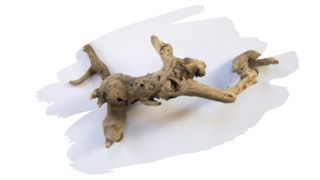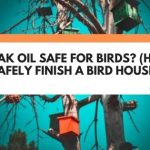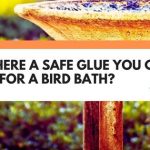You can find driftwood washing up on any seashore or waterfront. Widely used in aquariums, driftwood can provide shelter and hiding spots for fish.
But, can this sea-faring wood also make for a bird-safe perch?
Well, in this post, you’ll find out what driftwood is really made from. You will also learn the difference between the driftwood sold in pets stores, and the driftwood on the sea shore.
So, let’s get started…

This post may contain affiliate links to products that we receive a commission for (at no additional cost to you). Learn more here.
What Is Driftwood Anyway?
Driftwood is simply wood that has been floating in the sea, a river, or even across a lake.
It doesn’t even necessarily need to be adrift on the water. Wood that has been sat on the seaside can be classed as driftwood.
What’s The Difference Between Driftwood And Regular Wood?
Not much. The fact driftwood has spent time in open water is the only real defining characteristic of this timber.
But, the effect both salt and fresh water have on wood, can have an eye-catching weathering effect on timber.
Is Driftwood Natural Or Man Made?
It is a natural phenom — but it is one that can be replicated in a manufactured setting.
You see, after flooding, wood from damaged trees can end up in nearby lakes or rivers. And those pieces of lumber can go on to become the driftwood you find on the seashore.
In other words, any type of wood (in theory) can become driftwood.
So Why Should I Avoid Using Driftwood For A Bird Perch?
You need to be cautious when using driftwood to make that perch. But, it’s not because this timber is categorically unsafe to use.
Rather, it’s to do with the fact that you can’t be sure of what type of wood it’s from.
And if you aren’t sure of the wood type, then you cannot be sure if it’s safe to use around birds.
Related Post: Is Teak Oil Safe For Birds? (How To Safely Finish A Bird House)
But I’ve Seen Driftwood Sold In My Local Pet Store…
There are driftwood products that you can purchase from pet stores. However, these particular driftwood products are made for aquariums, and they’re used to help balance the pH levels of water.
What’s more, these driftwood products can also be made from any type of wood. For example, a popular aquarium driftwood is Bonsai tree driftwood.
However, Bonsai trees are an art form, not a specific tree species. Which doesn’t help you narrow things down as to the specific wood that particular driftwood comes from.
Related Post: Is There A Bird Safe Paint For Wood? (+ Why VOC’s Are The Real Problem)
So What Type Of Wood Is Safe For Birds?
The safest type of wood you can use is natural solid timber (from a wood species that is not harmful to birds).
There is one extra caveat to all of this; always make sure you only use untreated wood.
What Type Of Wood Is Safe For Birds? For a list of safe natural wood types for parrots, why not check out The Natural Bird Company’s guide over here.
And What Is Untreated Wood?
Untreated wood is any wood that’s free of wood preserving chemicals.
You see, wood is a natural material, and it is very susceptible to rot and decay. So, in order to fight off the bacteria responsible for wood rot, wooden boards get put through a chemical treatment.
This pressurized treatment involves infusing strong anti-fungal chemicals into that timber.
Related Post: Can You Really Use Untreated Oak For Raised Beds?
Those chemicals go a long way to helping preserve wood, allowing lumber to last longer. But, the downside is that those chemicals are much too toxic for birds to be near.
So, if your feathered friend loves to chew on wooden sticks, then avoid using treated wood to make their perch or toys.
To Wrap Up, Here Are The 3 Key Takeaways From This Post…
- 1). Driftwood is any wood that has spent time floating around in open water.
- 2). Driftwood isn’t a particular tree species, so you can’t be sure if it is made from a wood type that is bird-safe.
- 3) Only use untreated natural solid wood — made from bird safe woods — for bird houses, perches and toys.
References:
Treated Wood In The Landscape | Home & Garden Information Center


